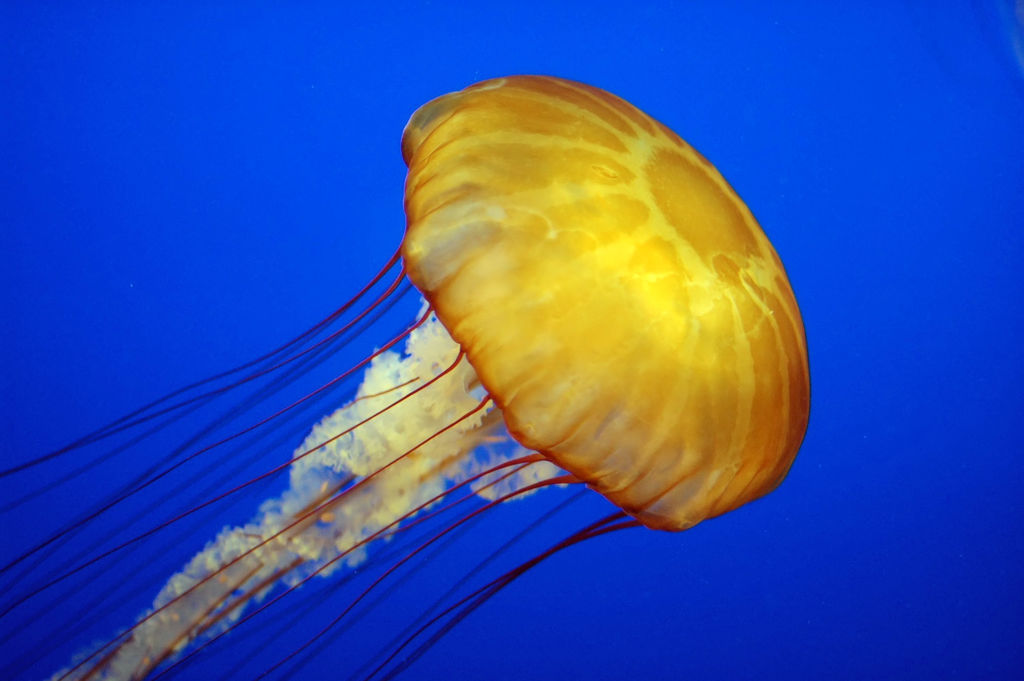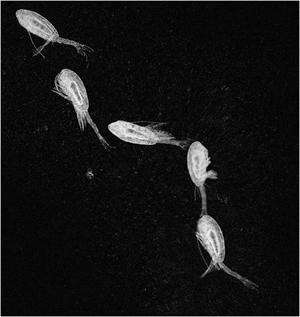I study zooplankton. When I tell people that they usually give me a puzzled look and ask what that is, to which I usually respond “small animals floating in the water”. The puzzled look often remains, and I continue “you know, like krill”. This might bring up pictures of big whales feeding, or maybe the omega-3 tablets they sell in health food stores. But zooplankton are much more than krill! Of course, the crustaceans, to which krill belong, make up an important part of the zooplankton, especially in the cold-water areas studied within NorMER. Copepods, zooplankton in the crustacean subclass Copepoda, are said to be the most abundant group of animals on Earth, even outnumbering insects!
In warmer waters, gelatinous zooplankton often dominate. You are probably familiar with jellyfish such as the stinging lion's mane (Cyanea capillata), but many other animals belong to the collective term “gelatinous zooplankton” – characterised by their fragile body and often transparency. Many studies indicate that climate change is driving the oceans towards a jellyfish dominated food web. But that is a different story.
Zooplankton belong to a range of taxonomic groups, in fact, the definition of a zooplankton has to do with function. More specifically, movement. Plankton are animals (zooplankton) or plants (phytoplankton) drifting with the surrounding water. This doesn’t mean that zooplankton can’t swim, but they are not strong enough (or big enough) to move against the current. By definition, fish are therefore not zooplankton, but their larvae are (they are called ichtyoplankton, fish plankton).

When we sample zooplankton in the ocean we get an idea of how abundant a species is at that specific time and position. But due to the water currents we can’t say where those specimens were in the past based on samples alone. We can measure ocean currents in the area using moorings or drifters, but if we want to cover a large area this quickly becomes costly and time consuming. And what if you work with historical data of zooplankton?
Hydrodynamic models describe water movement, and can be applied to simulate ocean currents patterns based on meteorological data. These models can be coupled with models simulating zooplankton, such as individual-based models. In that way, scientists can visualize the movement of zooplankton, both in the past (forcing the hydrodynamic model with recorded meteorological data), or in the future (using future climatic predictions). These “coupled biophysical models” have been much used during the past decade, especially in studies on fish larvae.
In my work, I try to figure out where zooplankton sampled in spring where in late winter, when they were eggs. To do this, I “seed” virtual zooplankton eggs (“particles”) in a model, let they drift with the ocean currents, and then pick them up again at the same time and place as we have a sample. Based on the ages of zooplankton in the sample, we can back-track the particles to their position when the zooplankton should have been eggs. Voilá, we have the egg distribution giving rise to the zooplankton in the sample.
Unfortunately, it’s not that trivial. Although they can’t swim against ocean currents, zooplankton are often able to move up and down in the water column. And small differences in the vertical position of the virtual zooplankton, the particles, can give large differences in the model outcome. For example, Vikebø et al. 2007 showed that virtual cod larvae released in spawning areas off Northern Norway tended to be drifted northwards towards the west coast of Svalbard if they stayed at 1-10 m depth, while larvae staying deeper (below 20 m) tended to remain in the coastal current, being drifted into the eastern Barents Sea.
Vertical movement can be added to zooplankton models, but this adds a range of new considerations the modeller has to make, often with limited information available (How deep should my zooplankton go? How does the depth range change in time?). While reflecting over such questions, it can nice to relax with a video of a beautiful zooplankton species, the sea angel. Now that’s a move!

